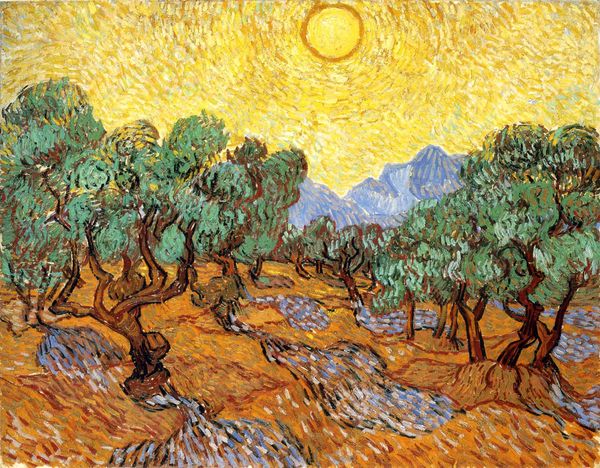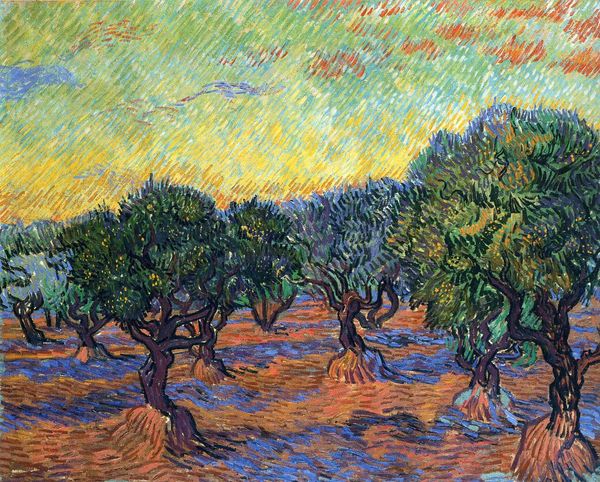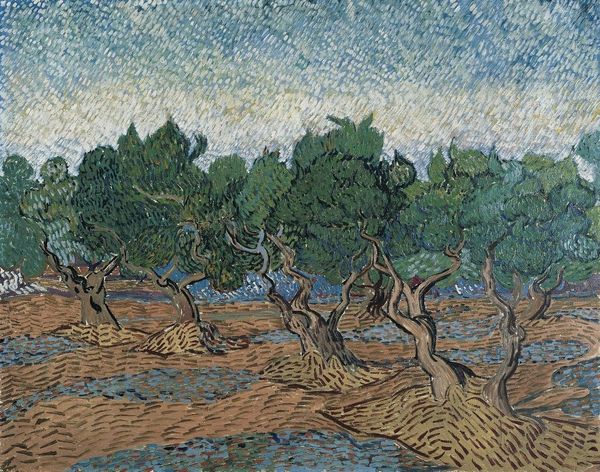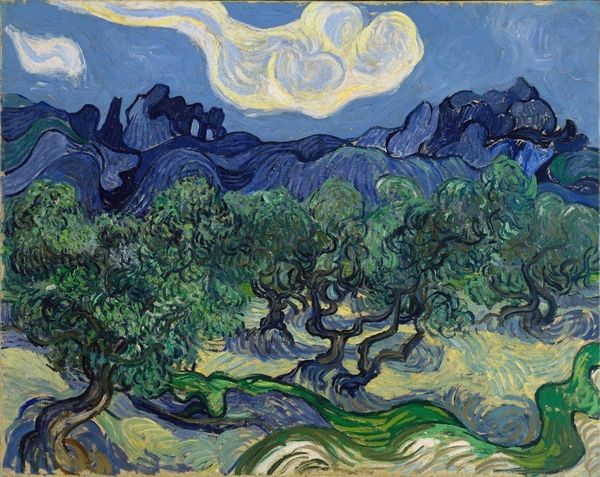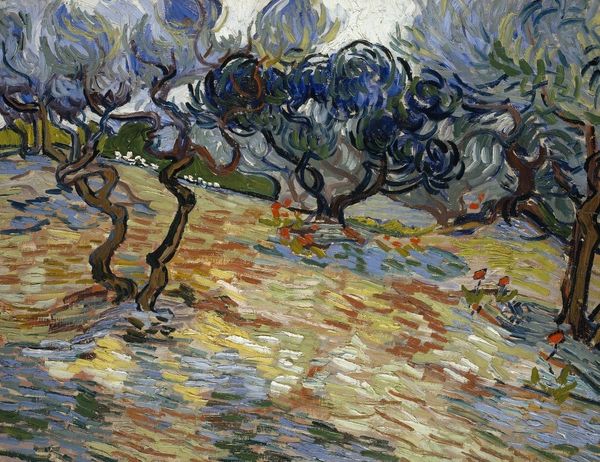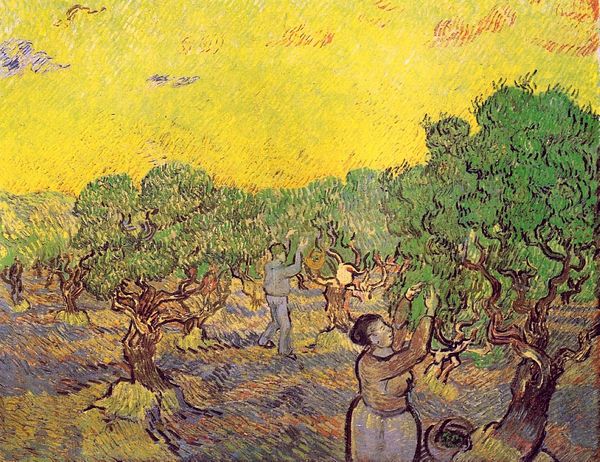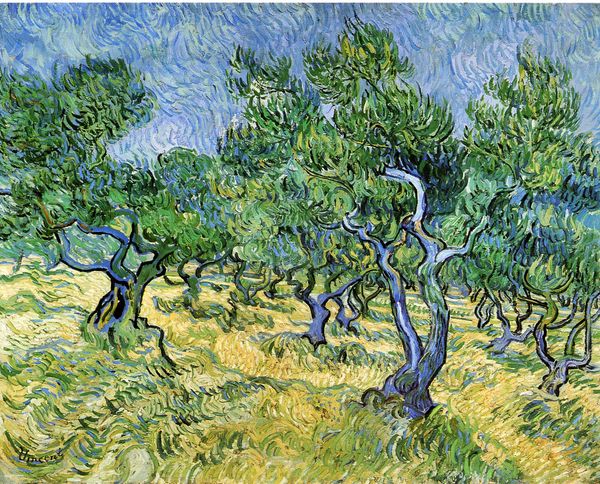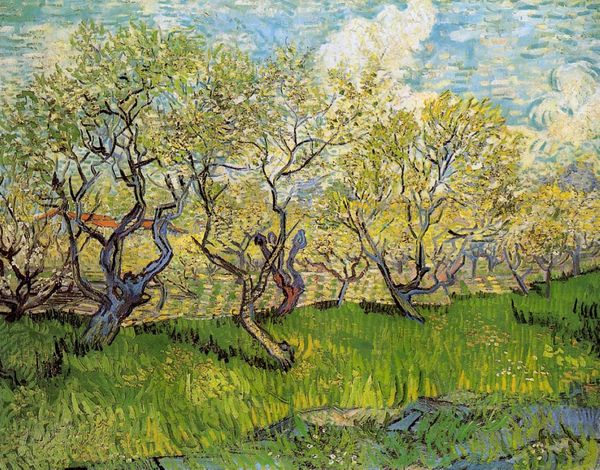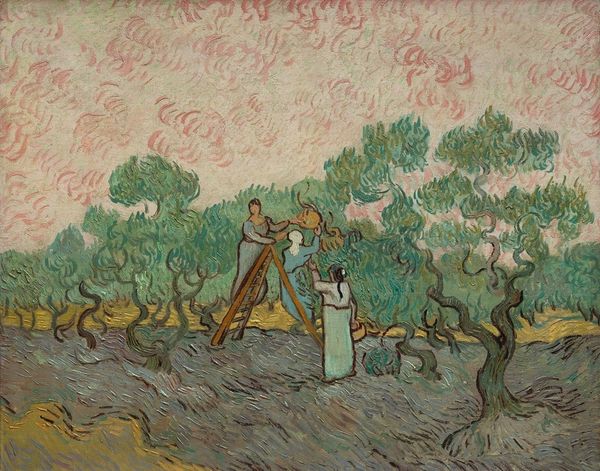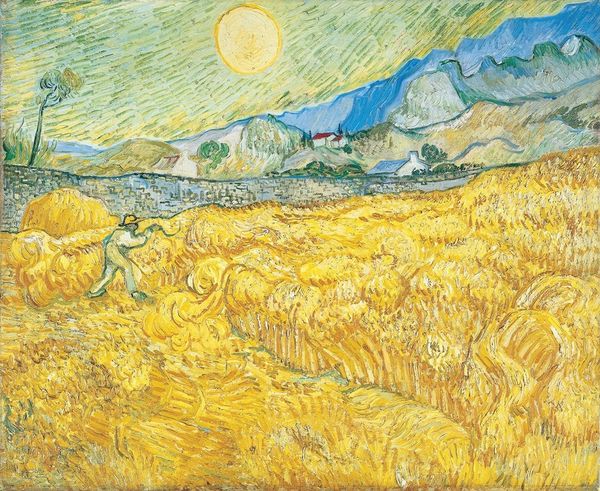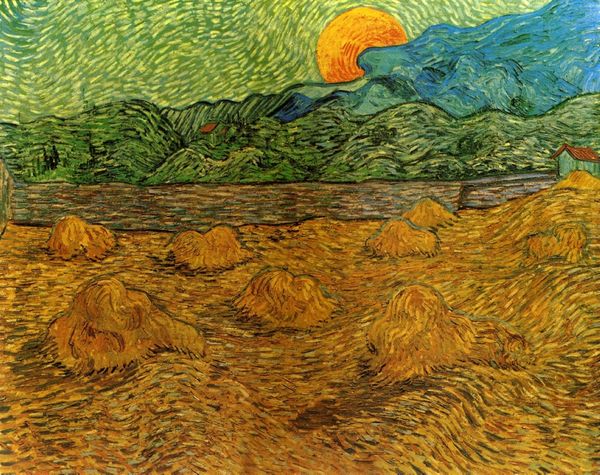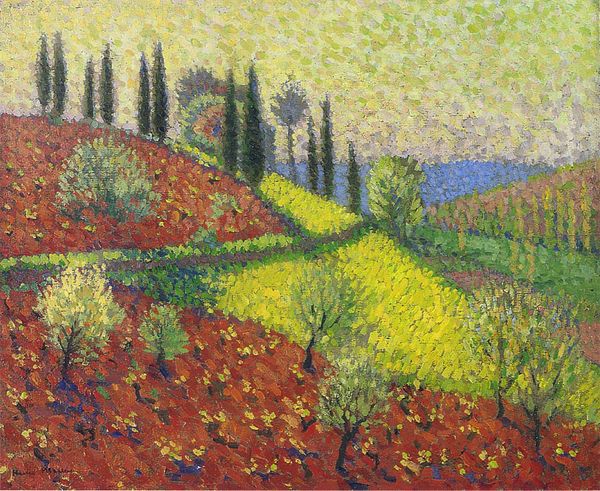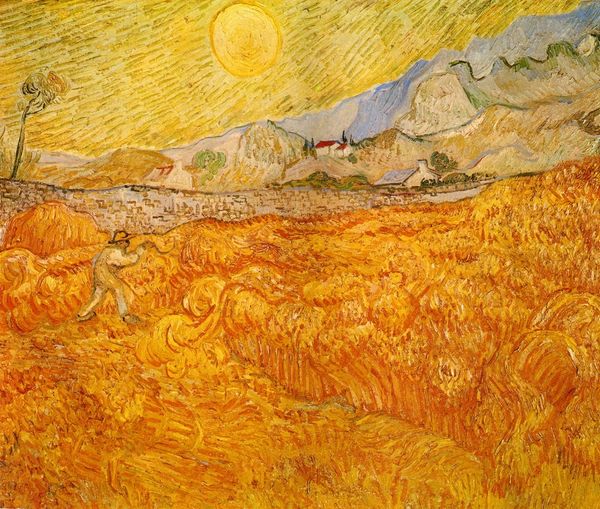
Dimensions: 29 x 36 1/2 in. (73.66 x 92.71 cm) (canvas)39 3/4 x 47 x 3 1/2 in. (100.97 x 119.38 x 8.89 cm) (outer frame)28 1/2 x 36 in. (72.39 x 91.44 cm) (sight)
Copyright: Public Domain
Curator: Looking at Vincent van Gogh's "Olive Trees," painted in 1889, currently residing at the Minneapolis Institute of Art, what's your initial response? Editor: Chaos. Controlled chaos. There’s a feeling of overwhelming energy, a kind of anxious vitality. The brushstrokes, those assertive jabs of color, refuse to settle. Is it unsettling for you, too? Curator: Not unsettling, necessarily. I see it as a reflection of inner turmoil, yes, but also an attempt to find solace in the natural world. Olive trees have long carried symbolic weight – peace, resilience, even immortality. It’s as though van Gogh sought to absorb those qualities. Editor: I agree there’s a seeking—but peace? Look at how those lines writhe across the canvas. There's an undeniable undercurrent of violence—a struggle for stability, perhaps a metaphor for his mental state within the asylum walls of Saint-Paul-de-Mausole. I can't ignore the historical context, the power dynamics inherent in illness. Curator: That may very well be a relevant reading of it. Still, doesn’t the cyclical nature of olive cultivation mirror themes of renewal and persistence? The repetitive, almost rhythmic brushstrokes perhaps illustrate a search for constancy amid upheaval. Note how even the sun radiates like a halo, a subtle invoking of sacred imagery. Editor: A halo or a burning eye, overseeing a landscape stripped bare by the ravages of illness and institutionalization? We can't overlook how social forces—the stigma around mental illness, the constraints placed on those deemed "mad"—shape artistic expression. Perhaps his ‘madness’ granted him a peculiar sensitivity? The mountains looming in the distance read like another kind of barrier, though… Curator: That may very well be. I'm often taken by the density and layering of his brushstrokes and how the very texture becomes almost sculptural, adding another dimension of emotive expression to this landscape painting. Editor: So, we arrive at this visual tension between peace and unrest, haven and confinement, mirroring our own positions perhaps. Art, after all, thrives in such friction, I believe. Curator: Indeed. Viewing this today offers insight into how nature holds many, often conflicting, layers of significance both historical and psychological, just like the person painting it, offering us fresh insights into these age-old connections.
